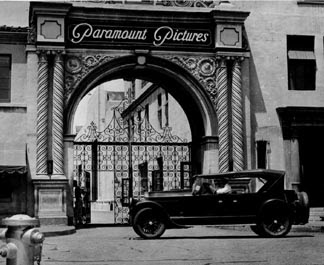It’s easy to blame the ongoing COVID-19 pandemic for the many issues currently happening throughout the film industry. Indeed, the pandemic has been responsible for quite a number of unfortunate events: the closure of most of America’s movie theaters, the delay of some films that were originally intended to be released theatrically earlier this year, and the release of other films onto digital home media rather than in theaters as previously planned (much to the chagrin of the theaters). However, there was one event last week that could not be blamed on the pandemic, although the pandemic could have some effect depending on how things play out from here. That event: the termination of the decrees set by the “United States v. Paramount Pictures” court case
In November of last year, the United States Department of Justice filed a motion to overturn the ruling that had been in place for over seventy years, and on August 7th of this year, a federal court granted the Department the requested motion. Unless new legislation is passed within the next two years, referred to as a sunset termination period, the decrees put in place by “United States v. Paramount Pictures” will no longer be valid. But what exactly is this case, and how will the erasure of its ruling impact the modern-day film experience?
In order to understand what led to this 1948 court case, one must go back even further to the beginnings of the American film industry. During this earliest period of film history, movie studios and theaters operated through vertical integration, meaning that the production, distribution, and exhibition of a single film could be controlled by one single company, often the studio. This system gave the majority of the industry’s revenue to a small handful of companies, creating perhaps not a complete monopoly, but an economic environment that limited competition and made it difficult for smaller, independent studios and theaters to have some presence in the industry.
Although the Federal Trade Commission had been investigating the major film studios since the Silent Era, it would not be until 1938 when the Department of Justice finally filed suit against the major studios. Although Paramount was the primary defendant in the case, others named included Warner Brothers, RKO Pictures, Metro-Goldwyn-Mayer, and 20th Century Fox (which, along with Paramount, made up a group known as the Big Five), as well as the Little Three: Universal, Columbia, and United Artists.
In 1940, the case received its first ruling from a federal court in New York, one that, among other things, deemed the practice of block-booking, the selling of multiple films as a single unit, unlawful. The studios, however, would not comply with this ruling, and so the court case continued on throughout most of the 1940’s. It was not until 1948 when the United States Supreme Court issued a final ruling, one that not only upheld the decrees set by the lower courts, but also forced studios to give up the movie theaters that they owned. Although studios had only owned less than 20% of theaters by the time the Supreme Court issued its ruling, they took in almost half the overall revenue generated by theaters. With this ruling however, they could no longer directly receive such large amounts of revenue.
The ruling had many effects on the film industry as a whole, specifically those relating to businesses outside the main Hollywood system. Not only did the number of independent movie theaters increase, but so did the production of films produced outside the major studios, leading to one of the first major movements of independent cinema. Most notable were foreign and independent films made without the approval of the Hays Production Code, which placed restrictions on the content that could be featured in films. This weakening of the Production Code, combined with the newfound creative freedom of those working in front of and behind the camera, would prove instrumental in the decline of Hollywood’s Golden Age.
For decades, the standards set by the “United States v. Paramount Pictures” remained firmly in place, but this recent motion by the Department of Justice could change all that. It is possible that the ruling could be appealed and struck down by higher courts, but there is currently no guarantee that this will happen. If it doesn’t, or higher courts end up siding with this earlier ruling, what would this mean for the future of the theatrical film?
For one thing, companies that produced and distributed films could once again purchase the theaters where they would be exhibited. While it’s not out of the question for a major studio like Disney to start buying up large numbers of theaters, there’s also the possibility that major tech corporations like Amazon could do the same. With so many theaters at risk of going out of business due to the pandemic, this ruling could allow these major companies to swoop in and take the theaters for themselves, allowing them access to revenue that would otherwise go to smaller businesses.
There’s also the return of block-booking that could prove to be a concern, which would require theaters to buy multiple films for them to exhibit at once, rather than a single film at a time. Because theaters would have to show a specific number of films by a given studio, it would leave less room for independent films to be shown and generate profit. Considering that blockbuster films already take in a majority of theater revenue, block-booking only strengthens their grip on theaters.
Nothing is set in stone as of yet of course, but given the potential impact, this is not an event that should be ignored.




